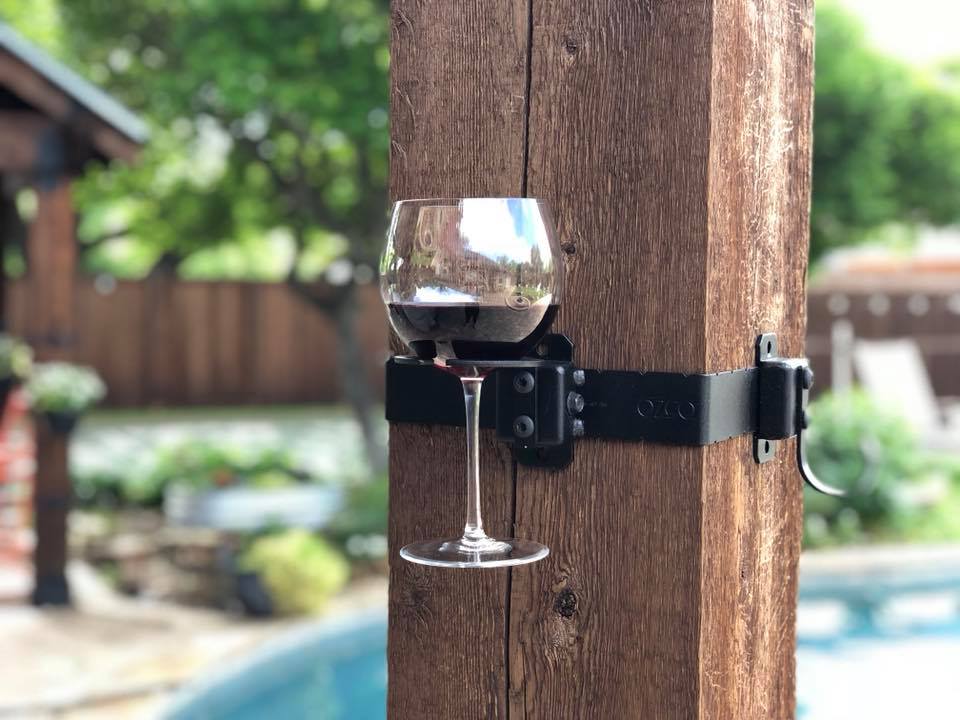Why Update Your Wooden Fence with Metal Posts
When making the rounds visiting friends and family at their homes this Thanksgiving, I noticed something odd. Everyone’s rear fences had doubled posts with a pale brand new wood posts planted next to an old weathered post. Closer inspection revealed that the old, gray, mildewed posts were nailed to their new neighbors, and these new posts were what was holding the fence up. They were also making it abundantly clear that the fences were old and in need of TLC, and that their owners were at a loss as to how to make a fence look better.
A lot of this damage was the result of a hurricane that came through earlier in the year. What happens with your typical wooden privacy fence is that the posts are buried in the ground, where they accumulate water and begin to rot. When a major wind event occurs, these posts snap off at the ground level and entire sections of fence topple. In the aftermath, as people begin recovery, they repair their fences and look for ways to build a fence that better resists the wind. In my opinion, adding a new wood post next to the old one is not the way to do this. A better way is to build a wooden fence with metal posts or replace your existing fence’s wood posts with metal ones.
Why Use a Wooden Fence with Metal Posts
Metal fence posts have many advantages over their wooden counterparts. The first is that as they’re made of metal they’re stronger and more durable in the face of high loads like those caused by wind. As mentioned before, they do not rot and galvanized steel lasts for a very long time in soil. A typical hot-dipped galvanized steel post lasts an average of 25 years even in the worst soil conditions. There is every reason to expect metal posts to outlast the wooden privacy fence they are supporting, resulting in less maintenance and work on the fence. A fence’s posts are arguably the most vulnerable part of a wooden fence, since they’re buried underground and exposed to moisture and insects.
There are two different types of metal posts that can be used with wood fences. The first type is very similar to street sign posts. These are U-shaped galvanized metal posts with holes punched regularly along their length. Screws go through these holes and attach to the fence’s top and bottom rails. The second type is the round galvanized posts you normally see in chain link fences. A two-piece bracket goes around the post and nuts and bolts on either end hold it in place. Another bracket that projects off to one side attaches to the fence. These posts also have caps which cover the top of the post to keep water from getting inside the hollow post. Each of these types of posts has its strengths and its weaknesses, which we’ll talk about in the next section.
Choosing a Metal Post Type
Round metal posts are stronger than their U-shaped rivals. Hollow tubing is, after all, stronger than a flat solid. While the U-shape on U-shaped posts does add strength, ultimately these posts are solid steel stock. This may result in compromised strength in a high-wind scenario. These U-shaped posts are the same posts that hold up signs like stop signs, and after the storm came through my town, every street sign in the city had developed a noticeable lean due to the wind. A few even sheared completely through at ground level. This ability to bend and shear is actually why these posts are used as supports for street signs. They are able to give way rather than tear through a vehicle if they’re hit. I’ve never worked with posts like this on a fence, but it may be that along a fence line, multiple posts of this kind are mutually supporting. On the other hand, a privacy fence using these posts might also be more easily blown flat or sheared off, invalidating the main advantage of using metal posts for a wooden fence.
On the other hand, U-shaped channels are easily hidden behind a wooden picket, which creates a completely wooden look for the fence. Round, cylindrical metal posts can’t be concealed the same way, and will be clearly visible on the rear side of the fence. Since this is the side the fence owner sees most, it can be something that really annoys detail-oriented homeowners.
On the whole, though, cylindrical fence posts are likely the better pick. They’re so much stronger and more likely to stay upright than their U-shaped alternatives that there really is no contest in terms of strength. When combined with a post anchor, almost anyone can easily install these fence posts. The weak point for these types of posts is that, in windy situations, the screws holding the brackets can pull loose from the wood. However, reattaching a section of fence to a bracket is easier than replacing bent or sheared-off posts. These sorts of posts are also inexpensive and available at every hardware store, making installation quick and relatively painless.
The brackets used on these types of posts aren’t hard to find or use, either. A good example is the steel to wood bracket from OZCO Building Products. Available in packs of 50 (or as single brackets), these steel to wood post brackets come with the necessary screws and bolts already in the bracket to make installing very easy and quick. When combined with post anchors, these brackets make installing a wooden fence with metal posts painless and simple. They can also be used to repair existing fences whose posts might not be in the best shape after a storm or other event. I recommended these to my family and friends as I made the rounds for Christmas as a more permanent solution than adding more wooden posts to a fence.












Leave a Reply